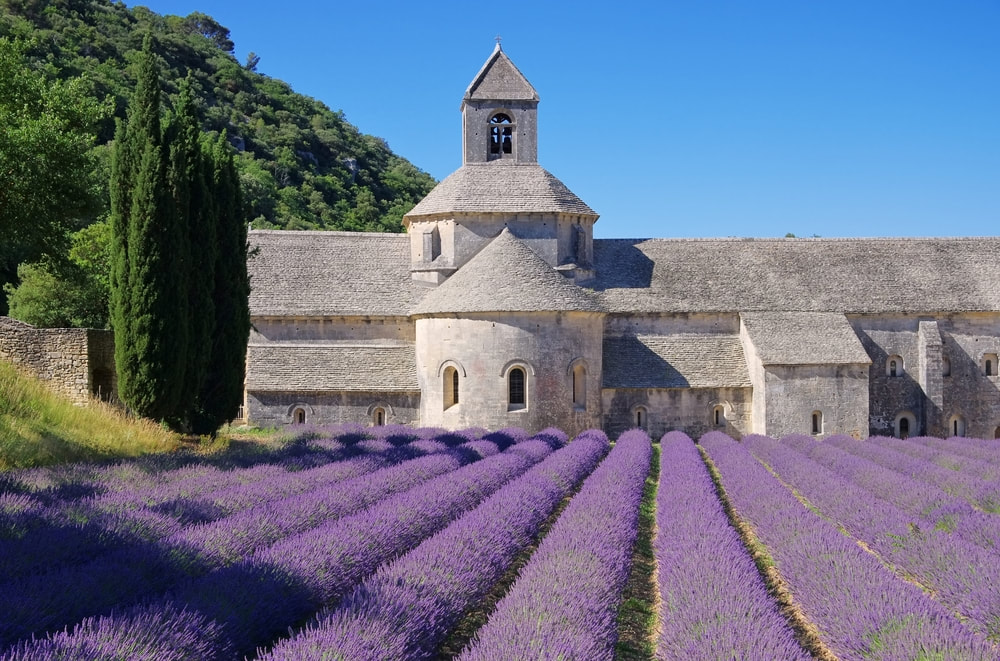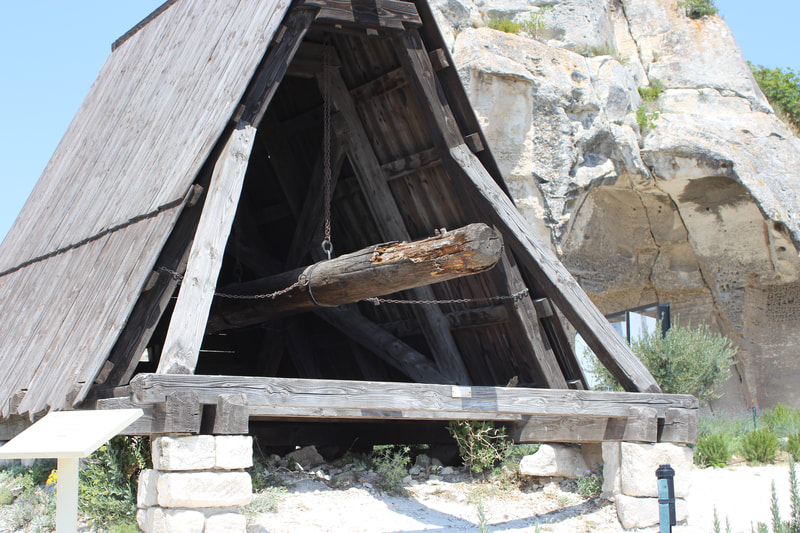|
7/24/2019
The Luberon Region of ProvenceWhen time and budget allows I always try to add a few days before and after a cruise to explore the surrounds, especially when traveling overseas. Flights are a big investment, so you might as well take advantage when you can. I did just that on my recent Rhone River cruise, with a self-drive trip exploring Provence and the Loire Valley. My pre-cruise adventure: the Luberon region of Provence. Never having been to this part of France, I didn't know what to expect. What a pleasant surprise. Located just south of Avignon and north of Aix-en-Provence, Luberon is a region full of rolling hills and hilltop villages guarding the green valleys below. And yes, lots of lavender fields too! The Senanque Abbey (Abbaye Notre-Dame de Sénanque) is what initially piqued my interest, so this became my starting point. With many villages in the area to choose from - Bonnieux, Lacoste, Saint Remy-de-Provence, Lourmarin, to name a few, I finally decided on Senanque, Gordes, and Rousillon on one day and Les Baux on a second. SENANQUE ABBEY (ABBAYE NOTRE DAME DE SENANQUE) From our base in Aix-en-Provence, once off the motorway, the drive to the abbey was quite picturesque, through small towns and windy roads. The abbey is located in a secluded area at the bottom of a valley, and the last several miles of road was basically wide enough for one car - SO thankful that no one was coming from the other direction (especially a coach bus). That would have been interesting! Plenty of parking was available near the entrance, so not sure why so many people parked along the road and walked the half mile or so in. The abbey was founded in 1148 and with the exception of a few years during the 1920's, has been home to a small community of Cistercian monks. Access to the grounds is open to everyone, and tours (guided - in French only and unguided tours with histopads) to see the inside of the abbey are available for a small fee. A large number of lavender products produced by the monks and in the area can be purchased in the gift shop. The abbey is surrounded by lavender fields, and bloom in late June into July. The picture above is what initially piqued my interest to visit the area. Unfortunately the "famous" lavender field in front of the abbey was empty, but I saw plenty of lavender elsewhere. The abbey was quite idyllic and well worth the adventurous drive. GORDES Gordes, about 20 minutes from the abbey (back up windy roads above the valley), is a medieval town perched on a hilltop overlooking the Luberon valleys. Officially named one of the most beautiful villages of France, it is probably one of the most photographed in Provence. It's location offers spectacular views, but be prepared to walk up/down some fairly steep paths from the parking areas. I walked about a half mle from the center to get this shot below. Despite appearing to be frozen in time, I was surprised by the number of 4 and 5 star properties, spa resorts and B&Bs we drove by. I would have loved to see the inside of a few of them. I bet once the tourists leave the area it is quite a tranquil place. ROUSSILLON Roussillon, a short distance from Gordes, is also named one of the Most Beautiful Villages of France. Roussillon boasts a lovely display of buildings in rusty red and mustard yellow hues. The town sits on the world's largest deposit of ochre, a natural pigment also found in the clay used on the buildings. Sunrise and sunset is quite gorgeous and in my opinion the best time to be here. It can get very crowded during the day, and parking is quite limited. LES BAUX-DE-PROVENCE About 45 minutes from Avignon and about 30 minutes from Arles is the world heritage site of Les Baux-de-Provence. It too sits up on hill, and has spectacular views of the Crau plains, the Carmargue and Arles. Quite popular, well over a million people visit the area annually. Although it wasn't too crowded the day I went (most likely because of the extreme heat - over 105 degrees), I recommend traveling here during the Spring and Fall when the crowds are less and the weather not quite as warm. It is believed that humans settled this area as far back as 6000 BC. If you enjoy history, I recommend reading more about it's rich and fascinating past, starting in the Middle Ages (1200-1300s) when the area was controlled by the powerful and rebellious lords of Baux. Today, about 400 people reside in Les Baux. It can only be explored by foot - you park down the hill and walk up. After years of decline, the town has been restored and is now also on the list of the Most Beautiful Villages in France. Restaurants, cafes, small shops, boutique art galleries and more can be found while meandering along the walkways. What sparked me to add Les Baux to my itinerary were the ruins of the old castle fortress "Citadelle des Baux" that sit above the village. You walk up through the town's narrow passageways to reach the entrance (tickets can be purchased in the gift shop). Give yourself 1-2 hours to walk the grounds, take in the explanations and best of all, the incredible views. The other reason I added Les Baux? Les Carrieres des Lumieres. A short distance from Les Baux (5 minute drive, 10-15 minute walk) is an abandoned limestone quarry which houses a permanent digital art exhibition with content changing every 6 months or so. The work of different artists is projected on the quarry walls during a one hour show. Ours included Van Gogh Starry Night and Dreamed Japan, Images of the Floating World. Mesmerizing. Absolutely amazing. Worth every penny (but not expensive anyway - under 20 euros per person). THE WORLD IS WAITING FOR YOU!
LET ME HELP YOU DISCOVER IT. Call us at 602.540.7338 to start the discovery process or complete this simple form . Comments are closed.
|
Laurie Marschall - Owner and Founder
|






















 RSS Feed
RSS Feed
